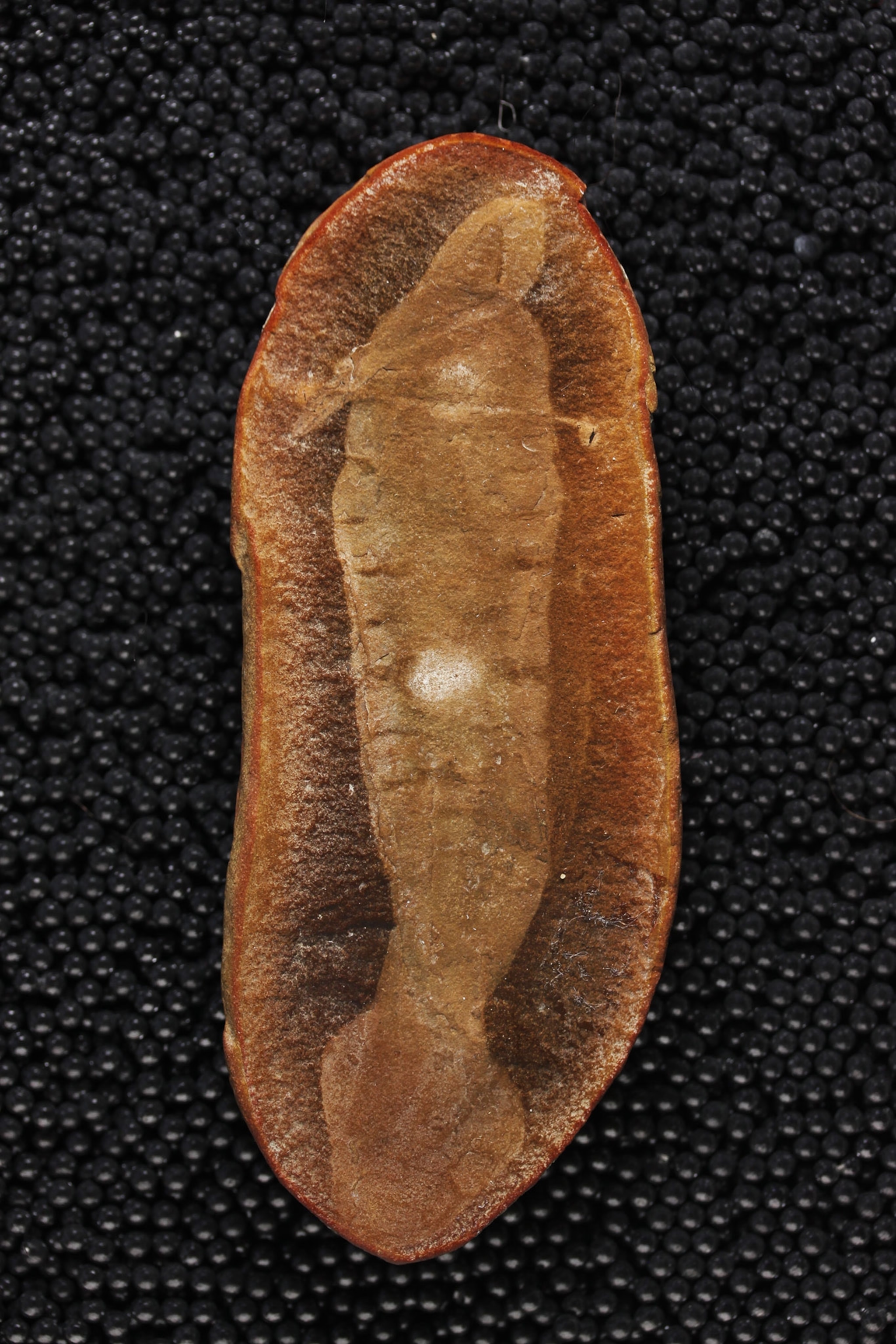
Scientists Finally Know What Kind of Monster a Tully Monster Was
The enigmatic creature—Illinois’ official state fossil—is a vertebrate, putting it on our branch of the massive tree of life.
More than 60 years after its discovery, Illinois’ bizarre state fossil—a soft-bodied “monster” that swam in rivers more than 300 million years ago—has been identified as a vertebrate. That puts the strange creature among the earliest in the group that eventually branched into today’s vertebrates, including fish, birds, reptiles—and us.
The surreal-looking creature, dubbed Tullimonstrum gregarium or the Tully monster, defies easy description.
“It looks like an alien,” says Victoria McCoy of the University of Leicester, who authored the study while at Yale.
McCoy’s analysis of more than a thousand Tully monster fossils, published Wednesday in Nature, reveals that the Tully monster was a vertebrate and had a primitive spinal cord.
The announcement comes as a shock to paleontologists, who for decades puzzled over the Tully monster’s place on the tree of life, but mostly thought of it as a spineless invertebrate, maybe some ancient version of worm, arthropod, or mollusk. Instead, the study shows that it was an ancient cousin to lampreys, which were among the first animals with backbones to evolve.
“A vertebrate! Amazing!” wrote Sam Heads of the Illinois Natural History Survey, who wasn’t involved with the study.
A Hobbyist’s Legacy
The Tully monster has been a mystery since a pipefittter named Francis Tully discovered it in a fossil bed known as the Mazon Creek formation in 1955, after rummaging through a coal mine’s scrap heap.
Tully came across a fossil unlike anything he had ever seen: an animal with a shovel-shaped tail, a trunk-like snout tipped with a claw-like mouth, and eyes affixed to the ends of a rigid bar. “None of the books had it,” Tully recalled in a 1987 interview. “I’d never seen it in museums or at rock clubs. So I brought it to Chicago to the Field Museum to see if they could figure out what the devil it was.”
Field Museum paleontologists were just as stumped. “No one recognized the creature,” wrote staff paleontologist Eugene Richardson in 1966. “We could not even decide what phylum to put it in, and that was a serious and embarrassing matter.”

After Tully’s death in 1987, Field Museum researcher Mary Carman and scientists from the Illinois State Geological Survey asked legislators to make the Tully monster an official state symbol. The bill was surprisingly controversial, and was called a waste of time. But in 1989, the Tully monster received state fossil status, one of 40 fossils with this distinction.
“I was proud—very proud—that we helped the people of Illinois choose something that was so unique and special,” says Carman, who is now at the Woods Hole Oceanographic Institution.
Finding Some Backbone
But despite its official title, the Tully monster continued to evade description. To put the question to rest, McCoy partnered with the Field Museum beginning in October 2014 to pore over thousands of Tully monster fossils, which the museum coincidentally had started digitizing.
Right away, the team was drawn to a light-colored band running from its snout to the tip of its tail.
Earlier descriptions had labeled this band as its digestive tract. But several fossils revealed that the band bore the hallmark traits of a notochord, the rubbery tube surrounding some primitive vertebrates’ spinal cords.
Once the researchers realized they were working with a vertebrate, many of the Tully monster’s bizarre features fell into place, especially once the team compared it to modern lampreys.
Scans of the fossils showed that the creature’s teeth probably were made of keratin, just like lamprey teeth (and human fingernails). A crescent-shaped hole in its midsection corresponded with modern lampreys’ nostrils, suggesting that it could smell. And in some fossils, the team spotted the faint outlines of the creature’s brain.
“It was about as smart as a modern lamprey,” says McCoy. “Not exactly genius level, but enough to survive.”
A Dream Come True
Resolving the Tully monster’s identity has been a dream come true for many of the study’s authors, who learned of the creature early in their careers as an example of paleontology’s outstanding mysteries.
“It’s been such a blast,” says Scott Lidgard of the Field Museum, one of the study’s co-authors.
Paul Mayer, Lidgard’s Field Museum colleague and a fellow co-author, even took a Tully monster-themed road trip in college, in a failed attempt to find his own fossils of it.
The researchers’ work, however, isn’t over. They now face the momentous task of figuring out how it moved, ate, and navigated its environment.
“It would be fascinating to watch it swim around,” says Mayer. “How does a Tully monster make its living? We don’t know.”
Even so, the study resolves one of paleontology’s most notorious cold cases—and assuredly will change Illinois civics classes forever.
Follow Michael Greshko on Twitter.





